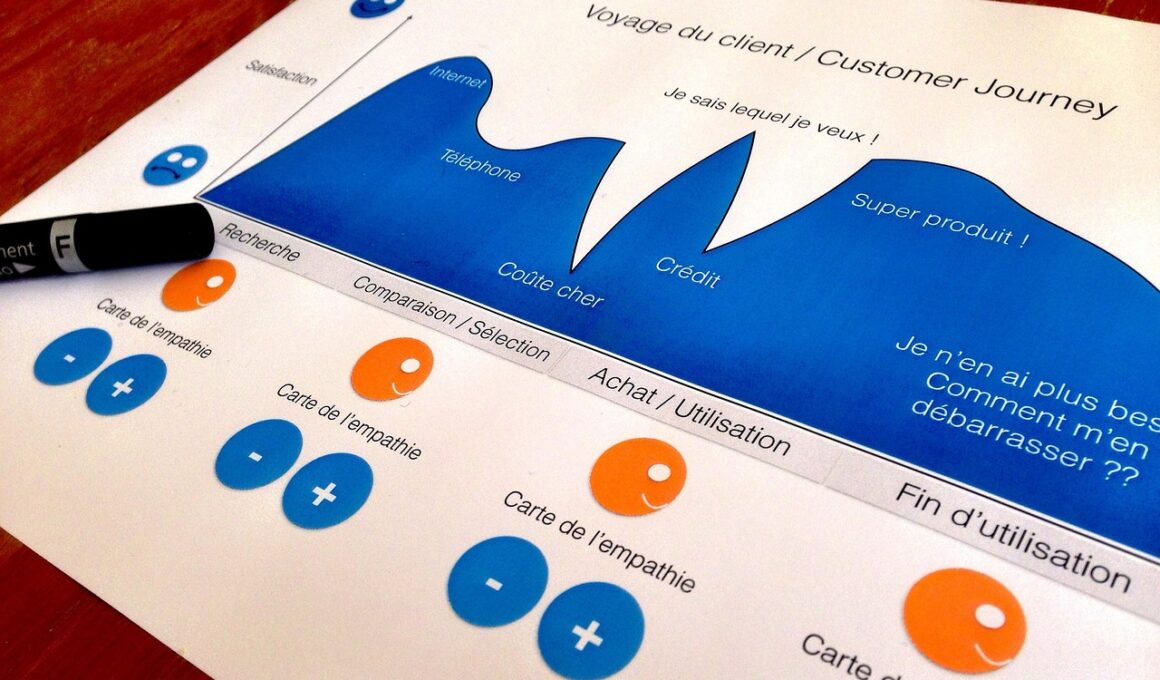Best Tools for Direct Marketing Customer Journey Mapping
Effective customer journey mapping is essential for enhancing direct marketing strategies. It allows businesses to visualize how customers move through stages, ensuring better engagement. Tools like Lucidchart provide user-friendly drag-and-drop features, making it easy to create customer journey maps. Another powerful option is Smaply, which excels in visualizing customer interactions. The software helps in identifying key moments that matter most to your audience. Miro is also recommended for collaborative mapping efforts, enhancing team involvement. For advanced analytical needs, consider Adobe Experience Manager, which integrates customer data and produces insights. These comparisons enhance understanding and optimize outreach strategies. Lastly, Hotjar helps track actual customer behaviors on websites, providing vital information for adjustments. Combining these tools leads to better planning, execution, and results in direct marketing.
To further explore customer journey mapping tools, it is crucial to evaluate user experience. Tools like Figma cater to design professionals, allowing thorough exploration of interfaces. It facilitates not only beautiful designs but also maps interactions seamlessly. On the other hand, Canva offers less complexity for marketers needing a more straightforward approach. With its templates, creating customer journeys becomes accessible to everyone, even those with minimal design experience. Consider using Microsoft Visio for businesses already integrated into the Microsoft ecosystem. Its rich features and compatibility with Office ensure ease of use across teams. Additionally, Gainsight focuses on customer success managers, analyzing the customer experience lifecycle. Lastly, FullStory provides unique insights into usage patterns and offers innovative data visualizations. These diverse tools help bridge gaps in understanding, allowing businesses to refine their marketing strategies based on actual user data.
Essential Features to Look For
When selecting tools, certain features should be prioritized for effective customer journey mapping. First, ensure that the tool has straightforward collaboration features that allow team members to share real-time insights. Additionally, integrations with existing systems are crucial; compatibility with CRMs or marketing automation platforms saves time and reduces data silos. Reporting capabilities also matter; look for tools offering customizable dashboards that present data effectively. Automation features can further enhance efficiency by sending targeted content based on mapping insights. Pay attention to user-friendly interfaces; complicated navigation can hinder adoption and use. Also, consider tools that allow customizable templates, as these can streamline the mapping process significantly. Finally, evaluate the extent of customer support; robust support ensures that any questions or issues are resolved promptly. When tools incorporate these features, they empower teams to create precise and actionable customer journey maps that lead to improved marketing outcomes.
For teams aiming to maximize collaboration, selecting user-friendly tools is essential. Trello is an excellent tool for collaborative project management, allowing teams to create boards focusing on customer journeys. Users can attach images, links, and descriptions, providing visual engagement for review. Asana offers another collaborative solution, helping teams coordinate efforts across timelines. Its task assignment features streamline workflows significantly. Zapier aids in connecting various applications, automating tasks, and making sharing data consistent throughout the marketing process. The ability to move seamlessly between tools reduces the friction caused by complex processes. Additionally, tracking customer interactions through communication channels can be achieved with CRM tools like HubSpot or Salesforce. These platforms integrate customer journey mapping directly with user data, enhancing the overall strategy. Together, these tools create an ecosystem that fosters collaboration while providing a holistic view of customer journeys.
Case Studies and Success Stories
Implementing effective customer journey mapping tools can lead to remarkable transformations within organizations. For instance, a study by Forrester highlighted how a major retailer improved conversion rates by over 20% after leveraging advanced journey mapping tools. Incorporating customer feedback directly into mapping helped identify pain points throughout the buying process. In another scenario, a B2B company utilized Gainsight to streamline customer onboarding, reducing churn by 35%. Continuously monitoring customer interactions resulted in tailoring communication strategies much more effectively. Documenting these success stories helps reinforce the value of robust customer journey mapping. Similarly, a SaaS business improved engagement rates dramatically, reaching new audiences by integrating Adobe Experience Manager. By visualizing how existing customers engaged with their platforms, they targeted outreach more precisely. These examples underline how essential customer journey mapping tools can be in directly impacting a business’s bottom line.
To continuously enhance customer journey mapping strategies, staying up to date with emerging technologies is critical. Artificial Intelligence (AI) is revolutionizing this field by providing deeper insights into customer behavior patterns, enabling predictive analytics. Tools incorporating AI, like Braze, offer tailored experiences based on individual customer preferences. Additionally, machine learning algorithms analyze vast data sets, resulting in actionable recommendations for marketing teams. Another advancement is the use of real-time analytics coupled with visitor tracking tools. A software like KISSMetrics enables marketers to gain insights into user behaviors before they convert. This information can be leveraged to optimize marketing strategies further. Staying informed about these technologies ensures that organizations remain competitive within their industries. Coupling traditional mapping tools with innovative solutions allows businesses to craft more personalized experiences for their customers, driving loyalty and increasing revenues. Ultimately, it demonstrates a significant commitment to understanding and enhancing the customer experience throughout their journey.
Conclusion and Recommendations
In conclusion, adopting the right customer journey mapping tools enhances direct marketing strategies significantly. Businesses should evaluate their specific needs while exploring features that offer collaboration, integration, and reporting capabilities. Popular tools such as Smaply, Hotjar, and Lucidchart stand out for their usability and features. It’s necessary to gather feedback from users to iteratively refine these processes and achieve desired outcomes. Educating teams on best practices for utilizing these tools ultimately drives engagement and optimization. Additionally, tracking results and refining approaches regularly allows businesses to adapt to client behavior shifts more efficiently. Remember to document success stories to inspire teams and demonstrate the value of customer journey mapping. With the right tools, organizations can craft compelling marketing strategies that resonate deeply with their audiences, fostering lasting relationships. Finally, continuous learning about emerging technologies and trends in direct marketing will help businesses stay ahead of the curve and create more tailored customer experiences.
Through intentional mapping of customer journeys, companies can significantly improve their direct marketing efforts. Leveraging tools that enhance understanding and response to customer needs ensures effective outreach strategies. Implementing a combination of qualitative insights and quantitative analysis can prove invaluable. Thus, investing time in training teams on using these tools is crucial for long-term success. Open communication about journeys allows members to share insights and collaborate seamlessly. Effectively utilizing these mappings leads to enhanced customer satisfaction and stronger marketing engagement outcomes. Overall, the investment in time, resources, and tools pays dividends in nurturing a loyal customer base while meeting business objectives. As marketing landscapes continue to evolve, so should the techniques employed to navigate customer experiences. While technology continues advancing, the core goal of creating meaningful connections remains unchanged. By properly mapping these journeys, businesses can create powerful strategies that resonate with their target audiences, securing stronger market positions amidst growing competition. Therefore, embracing these tools can position companies for sustainable success in the ever-changing direct marketing landscape.


